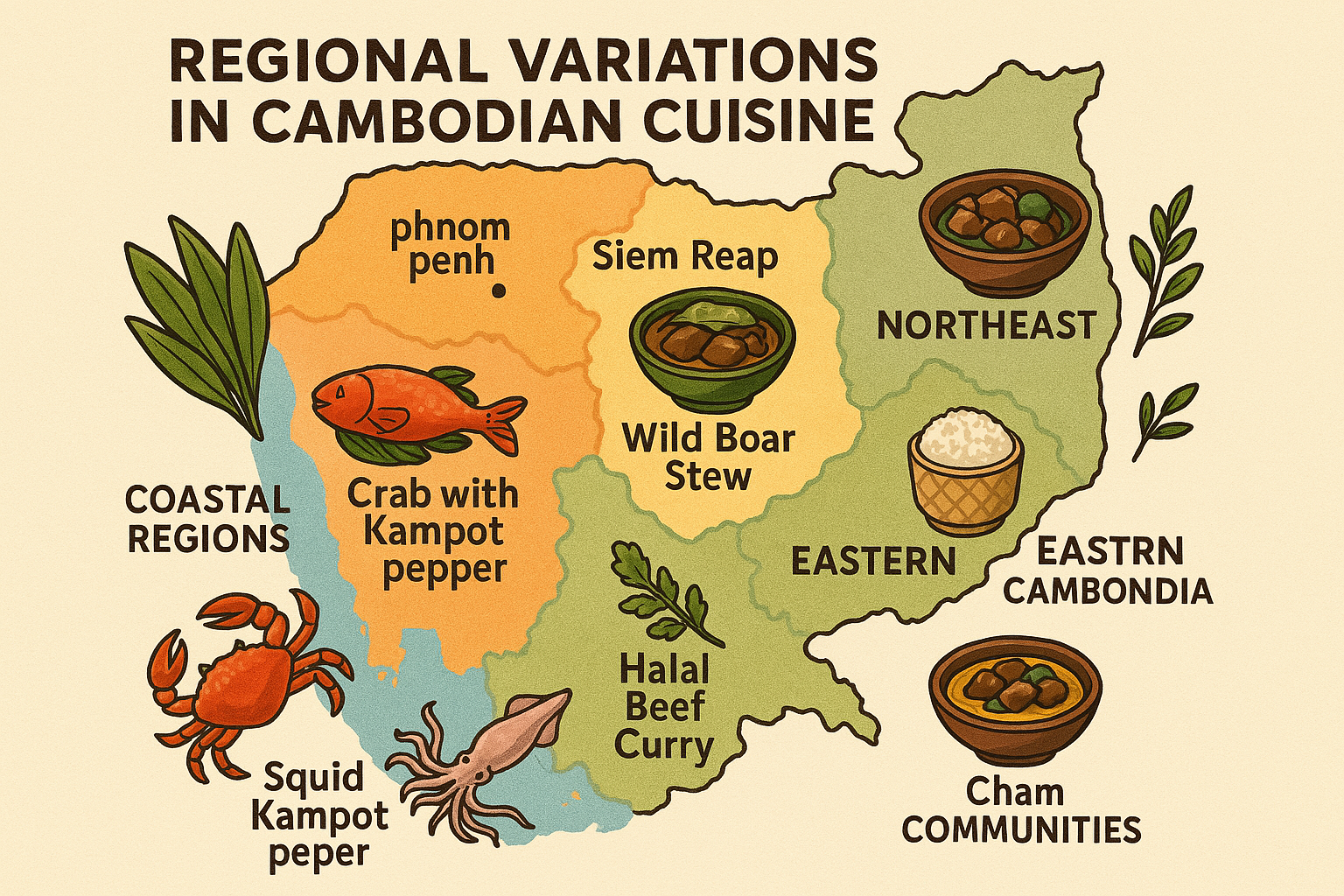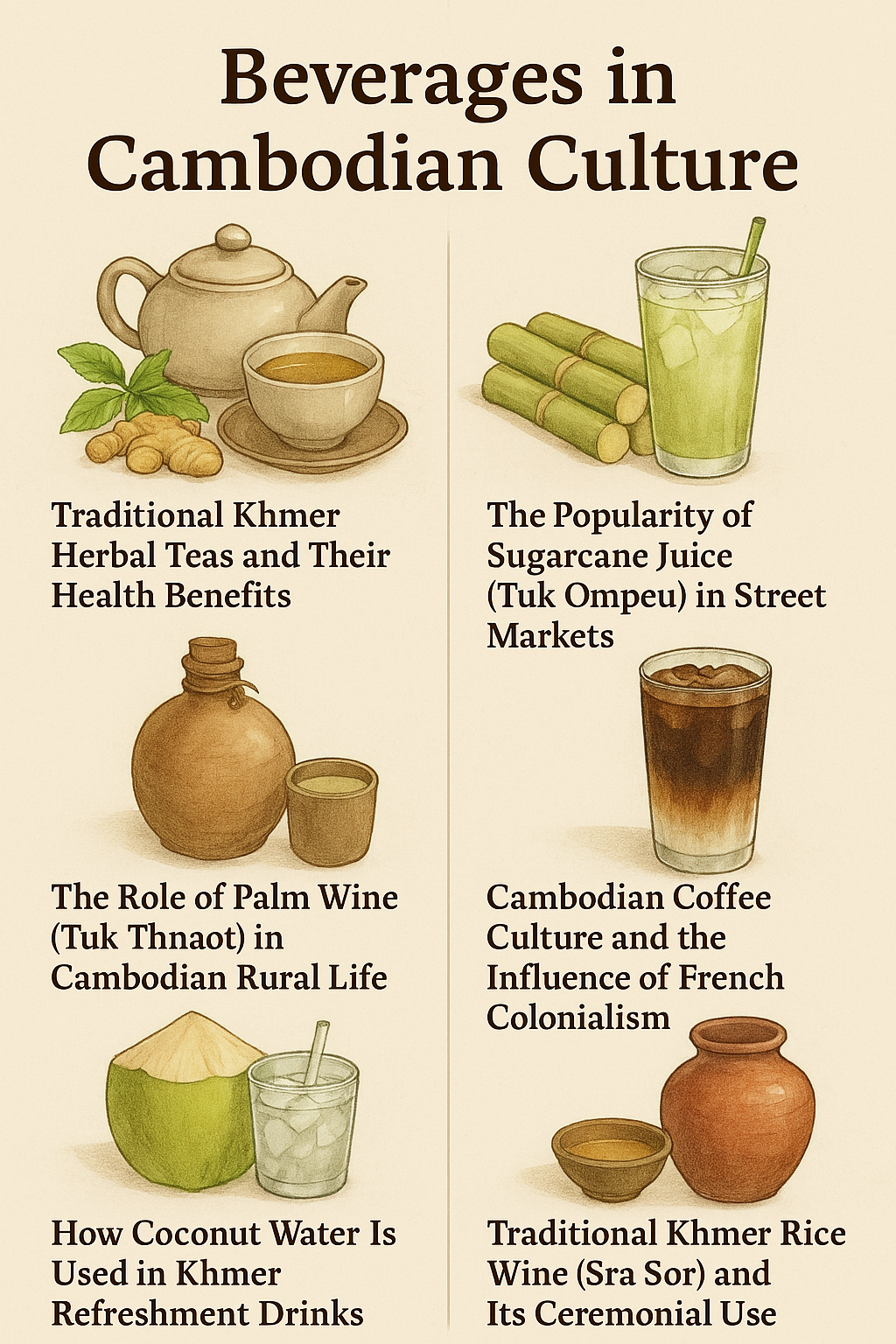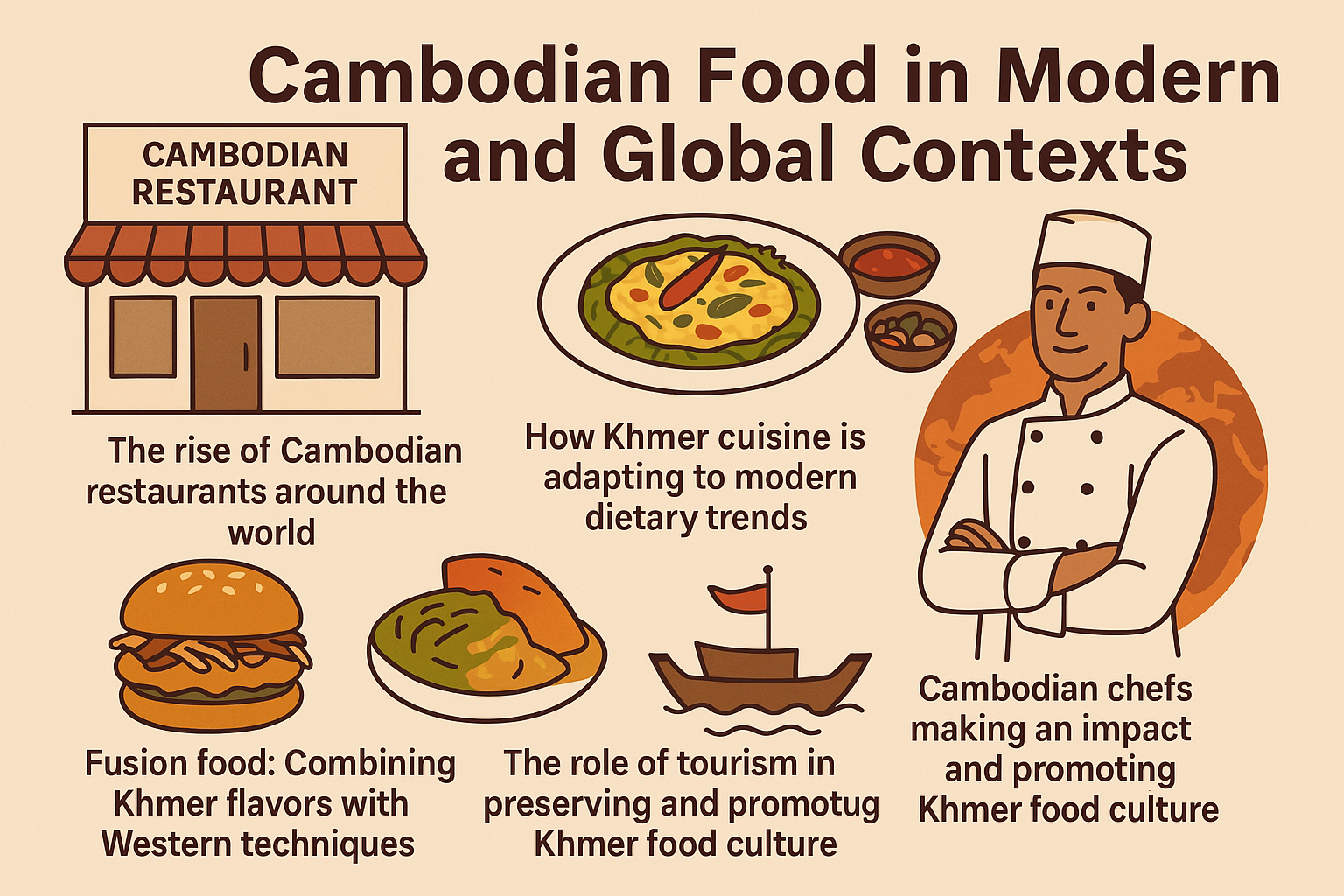Cambodia’s cuisine is as diverse as its geography and people. From the bustling capital of Phnom Penh to the highland villages of Ratanakiri, the country offers a rich tapestry of flavors, ingredients, and traditions shaped by local resources, cultural exchanges, and spiritual practices. This article explores the regional variations in Cambodian cuisine, revealing how each part of the country contributes a unique flavor to the nation’s culinary identity.

1. Urban Sophistication: Phnom Penh, Battambang, and Siem Reap
Phnom Penh
As Cambodia’s capital and largest city, Phnom Penh represents a melting pot of culinary influences. Its cuisine blends royal Khmer cooking techniques with urban innovation and colonial legacies. You’ll find dishes like Nom Banh Chok (Khmer noodles) elevated with modern flair and ingredients and refined presentations of classics like Amok Trey (Fish Amok). French baguettes have found their place in street food culture through Num Pang (Khmer-style sandwiches), layered with local pâtés and pickled vegetables.
Battambang
Known as Cambodia’s “rice bowl,” Battambang offers some of the country’s most agriculturally rooted dishes. Its cuisine emphasizes freshness and rural simplicity—think Kuy Teav (noodle soup) with locally sourced herbs and stir-fried morning glory with fermented fish paste (Prahok). Battambang’s strong artistic community also means a rising wave of creative fusion dishes in its boutique cafés.
Siem Reap
A major tourist hub, Siem Reap balances authenticity with international accessibility. Dishes like Lok Lak (stir-fried beef) are commonly served with a Kampot pepper dipping sauce, while street foods like skewered meats, grilled bananas, and sticky rice showcase both traditional and contemporary flair. The city’s cuisine is deeply tied to its temple heritage and vibrant night market culture.
2. Coastal Treasures: The Seafood-Rich South
The coastal provinces—Kampot, Kep, and Sihanoukville—are renowned for their abundant seafood and distinctive pepper. Kampot pepper, globally famous for its floral heat, is a star in dishes like crab with green peppercorns, a staple in Kep. Fish and squid are often grilled or dried, while seafood curries are enhanced with coconut milk and green mangoes for tanginess.
In Sihanoukville, beachside stalls serve Ang Meuk (grilled squid on skewers) and fish freshly caught from the Gulf of Thailand. The seafood-heavy diet here reflects both geographical abundance and a long history of maritime trade with neighboring Thailand and Vietnam.
3. Highland Traditions: Jungle Foods of the Northeast
The mountainous provinces of Mondulkiri and Ratanakiri, home to many Indigenous groups such as the Bunong and Tampuan, offer a cuisine deeply rooted in the forest. Ingredients are often foraged: wild mushrooms, bamboo shoots, jungle herbs, river fish, and game meat. Dishes are wrapped in banana leaves and grilled over open flames, sometimes cooked inside bamboo tubes in a method called “Changkot”.
Signature dishes include grilled river fish with forest herbs, wild boar stews, and spicy chili pastes made with native pepper varieties. Many recipes rely on minimal oil and natural seasonings, creating dishes that are earthy, nutritious, and spiritually connected to the land.
4. Eastern Influences: Lao and Vietnamese Flavor Crossroads
The eastern provinces of Kratie, Stung Treng, and Prey Veng, located near the borders of Laos and Vietnam, have developed hybrid cuisines. In these areas, herbs like Thai basil, sawtooth coriander, and lemongrass are used more heavily. Noodle dishes such as Kuy Teav Khor Ko (beef noodle soup) and Vietnamese-style spring rolls are common.
Fermented fish sauces (Tuk Trey) and pickled vegetables feature heavily, reflecting the preservation traditions of both Lao and Vietnamese influences. Sticky rice, typically a Lao staple, is also more common here than in other regions of Cambodia.
5. Cham Halal Cuisine: Culinary Heritage of Cambodia’s Muslim Communities
The Cham Muslim communities, particularly in Kampong Cham and Kampot, have preserved their culinary identity through halal cooking traditions. Cham cuisine integrates spiced rice dishes, beef curries, and dried fish preparations, all adhering to Islamic dietary laws.
Popular dishes include Cham-style beef stew with turmeric and coconut milk, and Halal grilled meats served with fresh herbs and tamarind sauce. Rice and lentil combinations show the influence of broader Islamic culinary networks, while unique Cham desserts like coconut sticky rice with palm sugar preserve centuries-old food traditions.
Conclusion: A Culinary Mosaic Reflecting Cambodia’s Soul
From urban cafés to jungle hearths, Cambodian cuisine is as diverse as its people and landscapes. Each region tells its own story through food—whether it’s the pepper-laced seafood of the coast, the ancient forest flavors of the northeast, or the halal stews of the Cham. Together, they form a flavorful mosaic that defines the soul of Cambodia.





